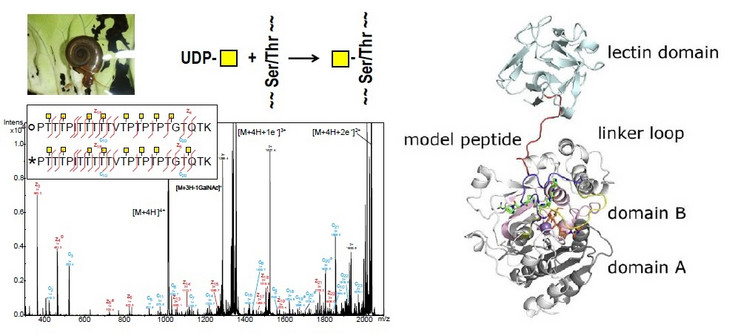Glycosylation is a posttranslational modification of proteins which is involved in a number of recognition, adhesion and transportation events. Snails are in some cases intermediate hosts of parasites and therefore the investigation of these processes are of medical relevance.
Enzymes which are involved in the biosynthesis of these glycans are an interesting tool for the modification of artificial oligosacchardes. There are only few informations on snail enzymes. We want to change that now ! In the course of this project different fucosyltransferases and one xylosyltransferase shall be purified, cloned and characterised.
The biochemical part of the work will be carried out at the Department of Chemistry under my supervision, the molecular biology part of the work will be supervised by Prof. Reingard Grabherr at the Department of Biotechnology.
Methods: biochemical methods (protein purification, enzym activity tests, characterisation) and molecular biology methods (cDNA-library, cell culture, cloning, expression ).
Co-workers dealing with this project:
Chantal Lucini
doctoral thesis 2014
Christopher Taus
doctoral thesis 2013
Teresa Riegler
diploma thesis 2010
Marita Preims
diploma thesis 2013
Financed by
FWF P22118-B20 (04/2010 - 03/2015)
Co-operation partner:
Univ. Prof. Dipl.-Ing. Dr. Reingard Grabherr
Department of Biotechnology, BOKU
Univ. Prof. Dr. Kiyoshi Furukawa
Nagaoka University of Technology, Nagaoka, Japan


